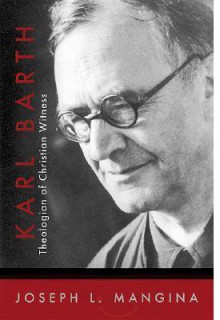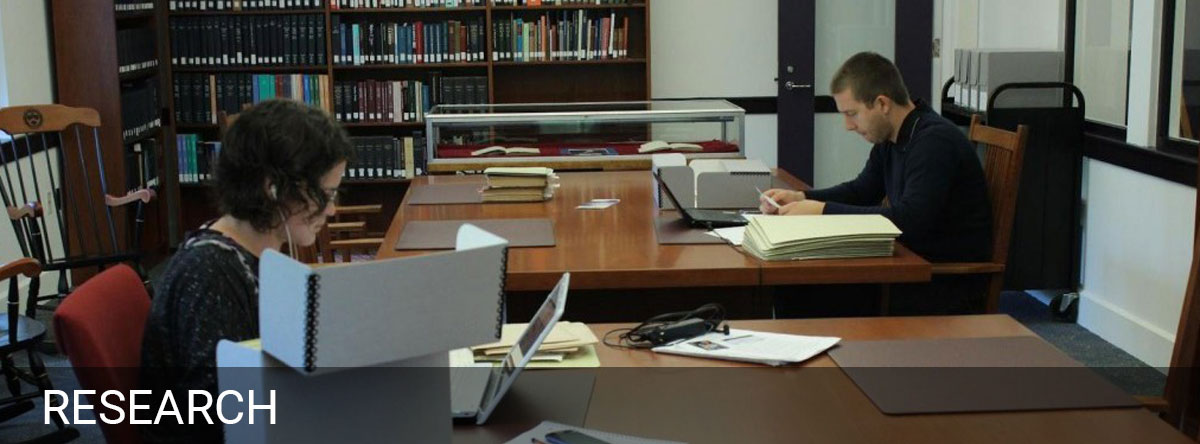 Joseph L. Mangina, Karl Barth: Theologian of Christian Witness(Louisville, KY: Westminster John Knox Press, 2004), xiv + 208. $29.95
Joseph L. Mangina, Karl Barth: Theologian of Christian Witness(Louisville, KY: Westminster John Knox Press, 2004), xiv + 208. $29.95
Reviewed by Jason T. Ingalls (June 19, 2009)
Joseph L. Mangina – an Associate Professor of Systematic Theology at Wycliffe College, University of Toronto – opens a welcome door to the study of Karl Barth’s theology in this volume, which was begun with the aid of Wallace Alston and Robert Jenson at the Center of Theological Inquiry in Princeton, NJ. Mangina’s work includes his previous book Karl Barth on the Christian Life: The Practical Knowledge of God (2001).
The aim of this volume is, very simply, to get a student reading Karl Barth’s theology, specifically the Church Dogmatics, as quickly as possible by providing “orientation to the major themes and topics that dominate Barth’s thought” (xi). Mangina does this in seven chapters, some ordered diachronically (1, 6-7) and some synchronically (2-5). Chapter one describes Barth’s life, biography, and theological development, and then offers an introduction to the Church Dogmatics and a guide to reading them. “While it is possible to read theChurch Dogmatics independently, and profit from it,” Mangina writes, “one’s appreciation is helped if one is able to set it in the context of the author’s fascinating life” (xi). With the aid of classic stories and new insights, Barth walks off the page.
Chapters two through five each takes a volume of theChurch Dogmatics, outlines what Mangina calls its “basic move,” summarizes the volume, and introduces a theologian to engage Barth in constructive dialogue. Chapter two addresses CD I, whose basic move is, according to Mangina, “God speaks” (29). After stating with force Barth’s emphasis upon God’s priority in Revelation, Mangina brings Barth into critical dialogue with George Lindbeck. Mangina addresses CDII in chapter three: “Barth’s basic move in the doctrine of God is thus to affirm God’s utter, sovereign priority over human beings – a sovereignty concretely determined as grace or covenant fellowship” (58). Chapter three brings Barth and Michael Wyschogrod into conversation on the Doctrine of Election. The Doctrine of Creation (CD III) is chapter four’s topic. Here Barth’s basic move is “the dependence of creation on the specific reality of Jesus Christ, who is the Alpha as well as the Omega” (88). In this chapter, Mangina sets the table between Barth and Stanley Hauerwas on suffering. Finally, chapter five is concerned with the Doctrine of Reconciliation (CD IV), whose basic move is “simply [the] equating of reconciliation with the concrete person of Jesus Christ” (119). Mangina introduces Robert Jenson here to discuss Jesus’ Crucifixion and Resurrection with Barth.
Chapters six and seven represent Mangina’s critical engagement with Barth’s work and show most readily the direction of his reading. Chapter six deals “with Barth’s ecclesiology and ethics, key components in his understanding of the Christian life” (xii) and places Barth in dialogue with Henry de Lubac on the church. The final chapter argues that Barth is an “evangelically catholic” theologian (179) and outlines Mangina’s hope that Barth will find a greater voice in ecumenical dialogue.
Mangina thinks Barth is a valuable ecumenical contributor because he was a quintessentially ‘biblical’ theologian. As such, he is someone to whom all Christians should listen, even if they end up disagreeing with his conclusions. Throughout Karl Barth: Theologian of Christian Witness, Mangina highlights Barth’s biblical usage, but he does so in no place more thoroughly than in the chapter on Election. Starting with the notion of “covenant fellowship,” a notion rooted in “the very heart of the Old Testament” (73), Barth exposits the doctrine in a “profoundly communal, temporal, and historical” way (74) which springs “almost instinctively” from “a narrative mode of thinking” grounded in the biblical text (75). Narratively, one can see that “to say ‘God elects me from all eternity in Jesus Christ’ and to say ‘God elects me here and now to a life of witness in this particular congregation’ are not, for Barth, mutually exclusive propositions” (75). Barth maintains this biblical thrust straight through his lengthy exegeses of the OT and Judas, and, in the end, is “so biblical” that Jewish theologian Michael Wyschogrod, the conversation partner in this chapter, maintains that the Jewish people must treat Barth as a member of the family (78).
But to highlight Barth’s biblical character, Mangina seems to downplay the extraordinary systematic accomplishments of II/2. While Mangina ranks the dogmatic excurses of II/2 “among the most brilliant in the entire Church Dogmatics,” he goes on to say that “far more important and compelling are the excursus devoted to biblical themes” (76). Thus, while Barth’s modified supralapsarianism is described (but not named) earlier in the chapter, its systematic importance is left unlauded and undiscussed, relegated to a mention of Calvin’s “double predestination” and “[Barth’s] critical dialogue with earlier Protestant theology” (71, 76). In this instance, Mangina seems to collapse Barth’s dogmatics into his exegesis.
Ultimately, this section would have been stronger if the three-fold nature of the Church’s proclamation, which Barth outlines in the opening chapter of Dogmatics in Outline (New York: Harper Torchbooks, 1959: 11-12), had been maintained. There, Barth says that exegesis continually asks the question “as to the source or provenance of the Word” (12). Exegesis is the ‘whence’ of the Church’s proclamation. Practical theology stands on the other side and asks “how? – that is, the question about the shape and form of the proclamation” (12). Standing squarely in the middle is dogmatics, which again and again asks the question, “what?” – what should the Church proclaim? This movement from whence to what to how is important because the tasks are substantially different and yet are equally necessary in their proper order to support the proclamation of the Church. In this sense, dogmatics takes its stand upon exegesis but cannot be collapsed into it. It would have been possible for Mangina to highlight Barth’s extraordinary biblical character without downplaying his dogmatic contributions.
But this is only a small consideration and will not keep this volume from being a jewel for Barth’s beginning students. Even though it opens the door to a large quantity of material, Mangina is aware of the projects’ limits and clear about its goals. “My goal is to wean the student from the secondary literature as quickly as possible, and to move her along toward an actual engagement with Barth” (xii). Mangina is also clear about his hope: “I will be happy if the pages that follow provide an entrée into the rich world of the Church Dogmatics. I will be more gratified still if they convey some of Barth’s intellectual adventuresomeness, humour, and deep love of God” (xiii). The author should be more than gratified. It is impossible to step away from this small volume without a living sense of three people: Mangina, Barth, and the God who flies across our vision like a bird on the wing.
The views expressed here are strictly those of the author; they do not necessarily represent the views of the Center for Barth Studies or Princeton Theological Seminary.


